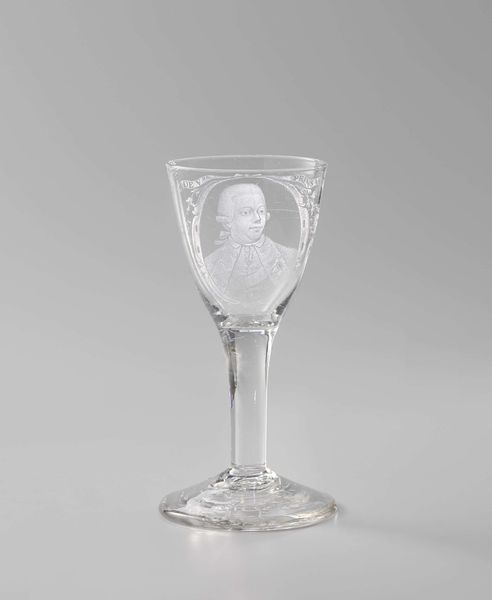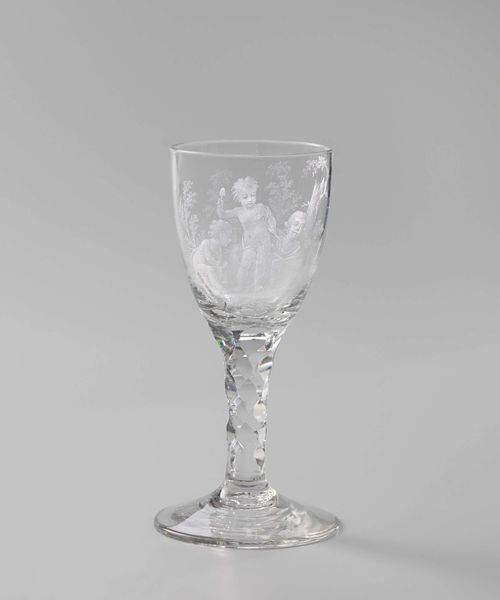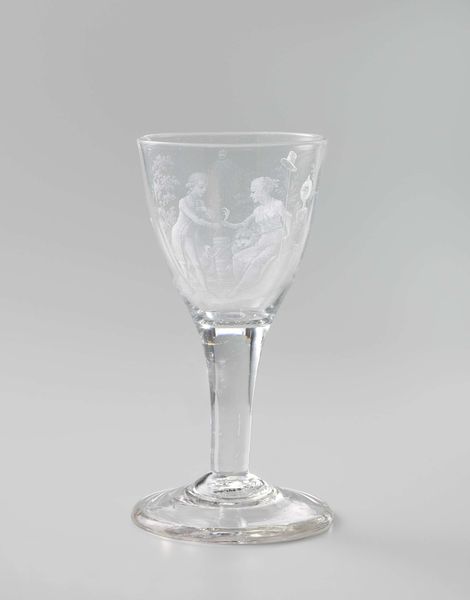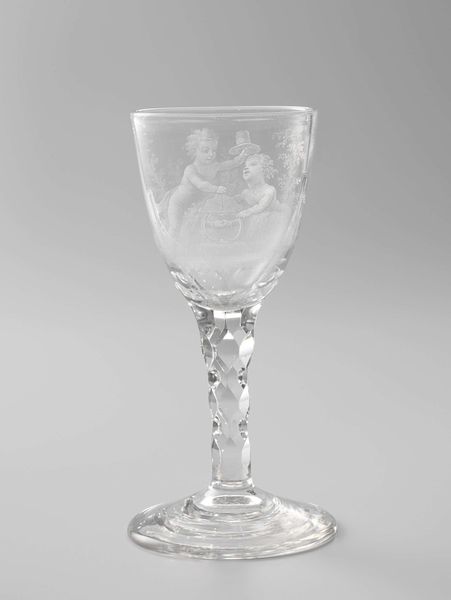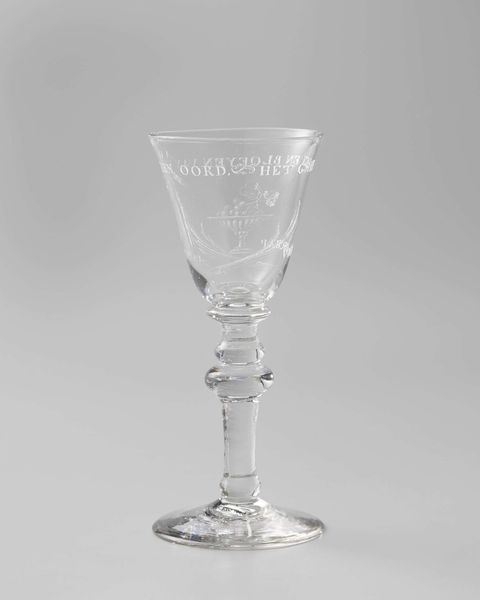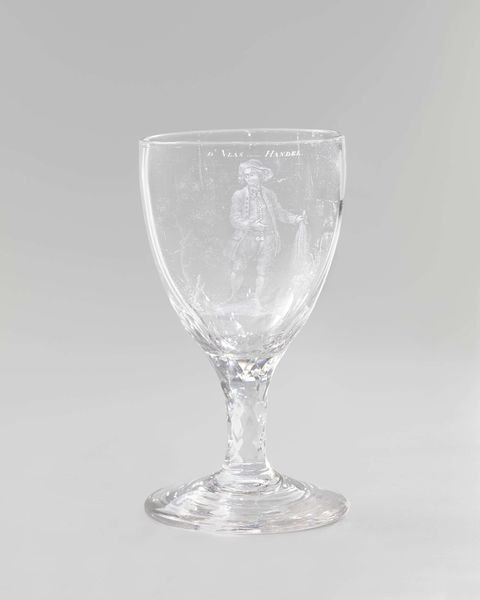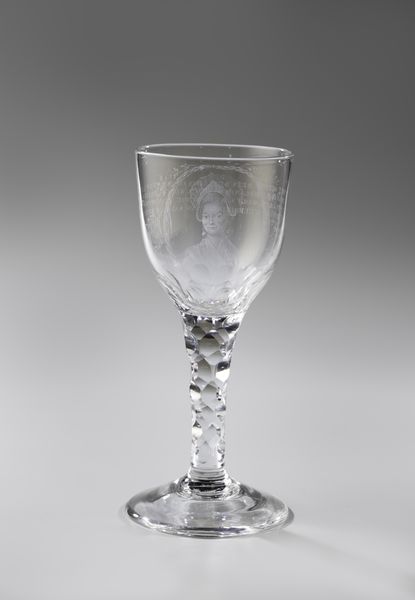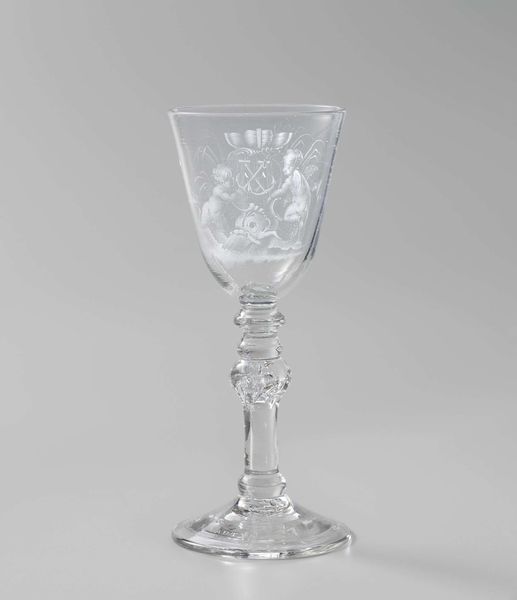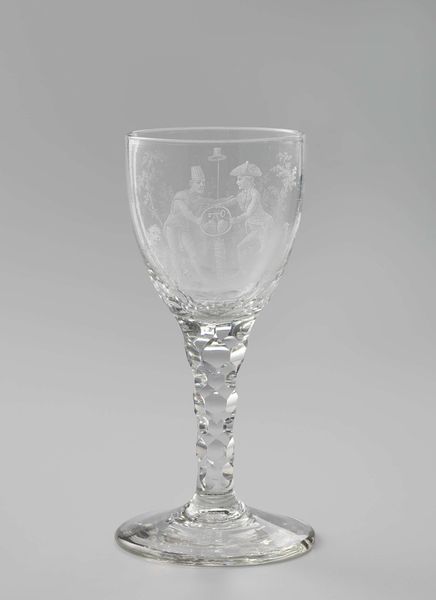
glass, engraving
#
portrait
#
medieval
#
glass
#
engraving
Dimensions: height 15.5 cm, diameter 7.9 cm, diameter 7.9 cm
Copyright: Rijks Museum: Open Domain
Editor: Here we have a wine glass from before 1798, engraved with a portrait of Stadtholder Prince William I. It's… surprisingly delicate for a commemorative piece, almost ephemeral. What do you make of it? Curator: Let's consider the glass itself. It isn't merely a vessel; it embodies social and economic relations. Its transparency alludes to clarity, while the engraving is a crafted element signifying luxury. Editor: So it's not just about the Prince William portrait? Curator: Precisely. Consider the labor involved. Glassblowing, engraving – each step reflects specific skills, class distinctions. The act of consumption, drinking wine from this glass, would be a ritual performance of status. Who do you imagine used a glass like this? Editor: Well, judging by the portrait, someone who identified with William I, likely someone of means? Curator: Indeed. Think about the message. Commemorating a leader wasn't solely about admiration; it's about constructing identity, signaling allegiance within a specific social framework. The "medieval" tag seems slightly off, however, it is closer to early modern! Editor: It's fascinating to think about everyday objects as political statements made through material choices and production processes. So, beyond aesthetics, it reflects class, labor, and identity. Curator: Precisely! This glass offers a window into the material culture and sociopolitical landscape of its time. Editor: I never considered how much information is embedded within a simple wine glass!


